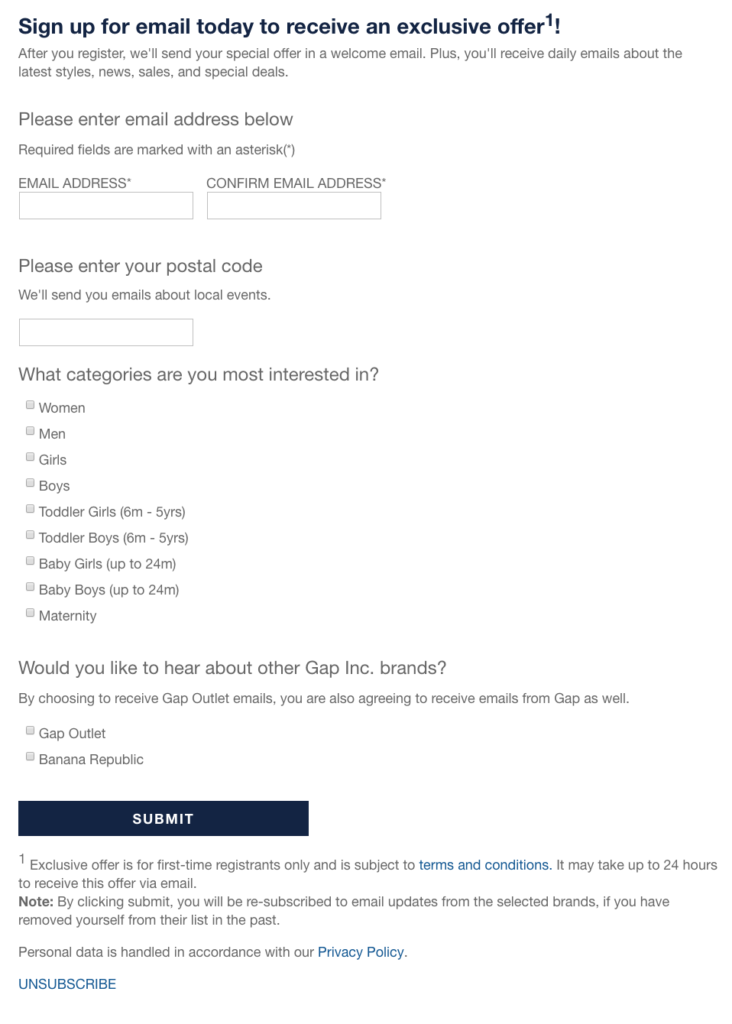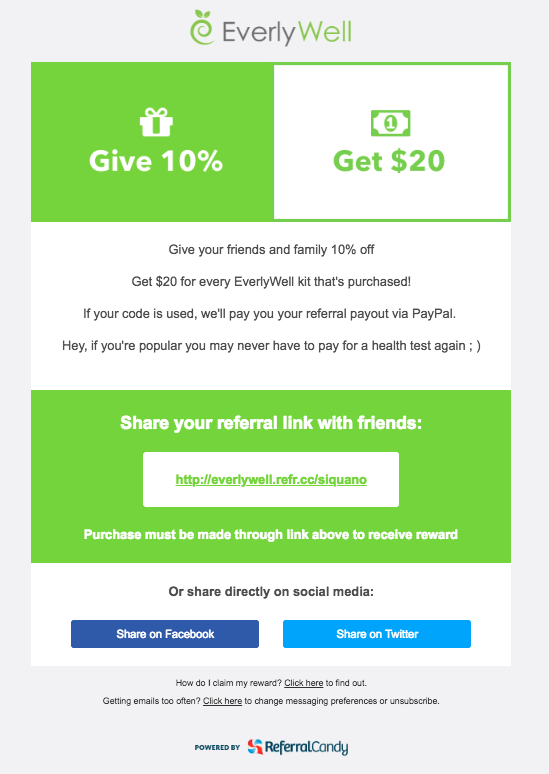GDPR-Friendly Tactics for Growing Your Email Marketing List


Did you survive the race for data compliance? It was a few years back now, when marketers rushed to ensure their processes were GDPR compliant before the deadline. If your subscriber list took a hit, what's your approach for growing your email database in a post-GDPR world?
In this blog, we've outlined our top 5 GDPR-friendly tactics to grow your subscriber list.
1. Optimise email sign-up forms
Email sign-up forms must outline what potential subscribers should expect from your marketing emails, how they'll benefit from them and how their data will be processed and privacy protected.
Pre-ticked checkboxes are a definite no-no under GDPR. Positive opt-in is all about ensuring clear confirmation of consent to receive marketing communications.
Here are some fundamental ways to increase new subscriptions on your website:
- Include email sign-up in your checkout process
- Add subscriber form popovers on key site pages (including mobile)
- Add links or short email subscription forms in your site footer
Popover forms on your website must also contain GDPR-friendly information and consent details, or at least take users through to landing pages with compliant forms. The same goes for footer links and forms. Optimise popovers by setting up automation based on behavioural triggers and buyer journey stage.
2. Offer clear value to your prospects
In order to convince prospects to join your subscriber list, you need to make clear the benefits and value subscribers will get from your marketing emails, including promotional incentives.
Consumers provide brands with valuable and sometimes sensitive personal details when filling out website forms, so in a time where people are very aware of GDPR and its purpose, you need to offer great value and incentives for this information exchange.
Here's a great (but a bit lengthy!), example from Gap where the brand is very clear about what email subscribers should expect. The form offers a good range of customisation and an offer is even included as an added incentive:

3. Create referral campaigns
Word-of-mouth and social proof are powerful ways to build your business reputation and acquire new customers. You can use referrals to grow your subscriber list too.
Encouraging new subscribers or existing customers to get friends and family to sign-up for your marketing emails is an effective tactic, especially in welcome emails. Offering incentives to both new sign-ups and for the referrers themselves is a win-win!
Check out this referral email campaign example:

4. Utilise transactional emails
Even now, your're not alone if GDPR can seem complicated and confusing. But of course, transactional emails can be sent to prospects and customers, even if they've not opted-in to received marketing emails. They can be sent due to legitimate interest, as part of the purchasing process, as long as consumers have not actively opted out of email communications completely. Even then, you'd likely have grounds to send as the emails are service emails.
For retailers, here are some emails that could be classed as legitimate interest:
- Browse abandonment emails
- Cart abandonment emails
- Post-purchase receipts/order confirmation
- Shipping/delivery reminders
Make sure to add sign-up links or CTA buttons to gain consent for marketing emails in these emails, as this will help grow your subscriber list and expand your scope for communicating with opportunities and customers.
5. Use social media marketing to drive email sign-ups
Use your social followers to gain new email subscribers. Promote your newsletters and outline the value of your regular emails. Also, give social followers clear and enticing incentives to join subscriber lists, both in the short and long-term. Gifts and discounts could be offered for new email subscribers.
For the longer-term retention strategy, you could create and promote loyalty schemes for those who join subscriber lists, outlining ongoing value and the offers and benefits subscribers will get.
Also, make sure you try and get as many customer preferences and indicators for segmentation and personalisation purposes. Make it clear that these measures are to ensure individuals receive more relevant and tailored content. This will benefit both your brand and your subscribers.
Campaign Monitor recently shared a handy infographic, outlining the key reasons for integrating social media marketing with email. Check it out >> How to Combine Email Marketing and Social Media: Infographic.
Summary
The game has changed for email marketers in the wake of GDPR rules, but the future of email marketing is still bright. Brands must just adapt their email strategy. Focus on building trust, providing transparently and convincing prospects and customers about the value of your marketing content.
Suggested Reading From The Blog
Most Popular Blogs
20 Horrifyingly Good Halloween Email Creative Examples
4 Minute Read
20 Great Birthday Email Marketing Examples
5 Minute Read
Top 10 Email Marketing Platforms for 2024
6 Minute Read
Editor's Picks
Top 10 CDPs for Email Marketing in 2024
4 Minute Read
Top 10 Email Marketing Platforms for 2024
6 Minute Read
20 Black Friday Countdown Email Marketing Examples
4 Minute Read
